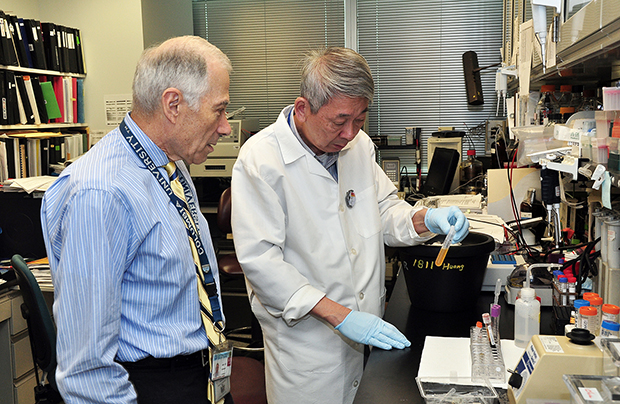Genes and childhood adversity combine to create a predisposition to suicidal behavior in a subgroup of psychiatric patients. If we can identify who is at heightened risk we can better target prevention efforts. We employ a multidisciplinary approach to study how reported childhood adversity interacts with genes to mold the predisposition to suicidal behavior.

Project 1
Project 1 (Arango) studies postmortem brain tissue from suicides with major depressive disorder (MDD) to examine the relationship of childhood adversity (psychological autopsy) to candidate gene expression or function in neurons from prefrontal cortex, anterior cingulate cortex and hippocampus, brain regions of importance in major depression and suicidal behavior. This project examines the levels of growth and apoptotic (premature cell death) factors, stress system indices and the serotonin system which is both a target of stress effects and has a pro-growth effect on neurons. Correlations with suicide and aggressive traits will be determined.
Project 2
Project 2 (Champagne) uses a maternal deprivation mouse model to examine childhood adversity effects on DNA methylation and expression of the same genes as in Project 1, and effects on the same brain biology as well as depression, anxiety and aggressive behaviors in the mice.
Projects 3 + 4
Project 3 (Mann) and Project 4 (Ochsner) will study the same set of MDD suicide attempters, MDD nonattempters and healthy volunteers and quantify brain neurotransmitter status and fMRI regional brain responses to evaluate cognitive control of emotion, as this is relevant to major depression and suicidal behavior. They will evaluate the relationship of identified circuitry changes to reported childhood adversity.
Project 5
Project 5 (Stanley) will clinically characterize all the subjects in P3 and P4 and then determine the relationship of reported childhood adversity to aggressive traits (reactive and proactive aggression) and then relate aggression type to stress responsiveness and type of suicidal behavior. Aggression and stress responses will be measured by laboratory tests and by ecological momentary assessment in the real world. Findings in P5 and P3 are compared in exploratory aims (impaired serotonin function and greater aggression) and P4 (reactive individuals and weaker cognitive control over mood).
